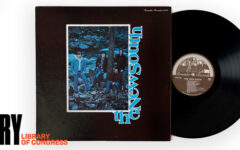The numbers are in for the first quarter and they don’t look promising, at least not on the surface. Nielsen SoundScan reports that 89 million CDs were sold from January 1 through March 18. That’s a drop of nearly 20% from last year’s number of 112 million. This is the latest in a series of declines that began as early as 7 years ago. Year after year the industry has seen declines in the 5-10% range. This year could bounce back somewhat, but many analysts are suggesting we’ll continue to see sales of physical units slip.
The first follow up question you want to ask is “Did digital sales make up the difference?” The short answer is “no.” The longer answer is “somewhat.”
Breitbart.com reports that online sales of “digitized albums” fell from 119 million (during the first quarter of 2006) to 99 million. That’s a 17% decrease. What exactly is meant by “digitized albums” in unclear since later in the article they indicate that physical CD sales still account for 90% of sales.
Individual digital track sales did increase from 242 million tracks during the same time period last year to 288 million this year. That’s an increase of 16%. Industry wide though, estimates place total revenue at 25% less than it was a year ago.
So how is this to be viewed as good news? Michael Arrington, author of the popular technology blog Techcrunch, thinks it’s a good thing because it will force the industry to face the facts. (Story here)
The faster music labels realize their massively profitable days are over, the better it will be for them, as well as the bands they represent and us, their customers. Digital music sales are not going to make up for lost revenue. Suing their customer base is not going to make up for lost revenue. In fact, absolutely nothing is going to make up that lost revenue. The industry, revenue-wise, is going to continue to shrink.
As the marginal price of recorded music continues to fall towards zero, its natural price, bands will need to make money elsewhere. Live concerts will become more and more popular, and will be the largest source of revenue for many artists. Recorded music will be used to promote those live events.
I agree with him that the labels need to recognize and deal with the new economy of a changing industry. I don’t totally agree though that the natural price of recorded music is zero. I think the music has value and savvy people will figure out how to leverage it.
He does seem to be correct about live concerts though. Billboard is reporting that 2006 was a banner year for live concert income, showing a gain of 35% over 2005. We’ll see if that trend continues.
My own personal opinion on the whole state of the industry is twofold. First I’ll reference a a post I wrote some time ago on the subject in which I suggested that consumer spending on entertainment media has simply shifted to other formats.
the rise in sales of DVDs (grew by twice the decline in CD sales during the same period) and video games…consumers may be spending their discretionary income on these titles rather than CDs.
Secondly, let me state again that my personal opinion is that much of the music introduced to the consumer via major labels…stinks! People just aren’t buying it because it isn’t good.
Closely tied to that is my third point. The entire industry landscape is changing. If you are interested in the subject I suggest you read The Long Tail. The labels, by nature of their business model, are only interested in hit records. But with the internet at his fingertips, the consumer has been presented with a whole plethora of choices the labels never gave him. And he’s making those choices. People are finding music that appeals to them, but might not appeal to a mass market large enough to interest the major labels. So we see the rise of the independent artist.
This is good for the art form and the consumer, but bad for the labels. I think it’s good for bluegrass as well. If we, as a genre, can take advantage of this shift in landscape to put our music in front of new consumers who are just now discovering that they might like something different, we could see a rise in sales of bluegrass recorded music and ticket sales.
The question is, “How do we accomplish this?” Any ideas?







